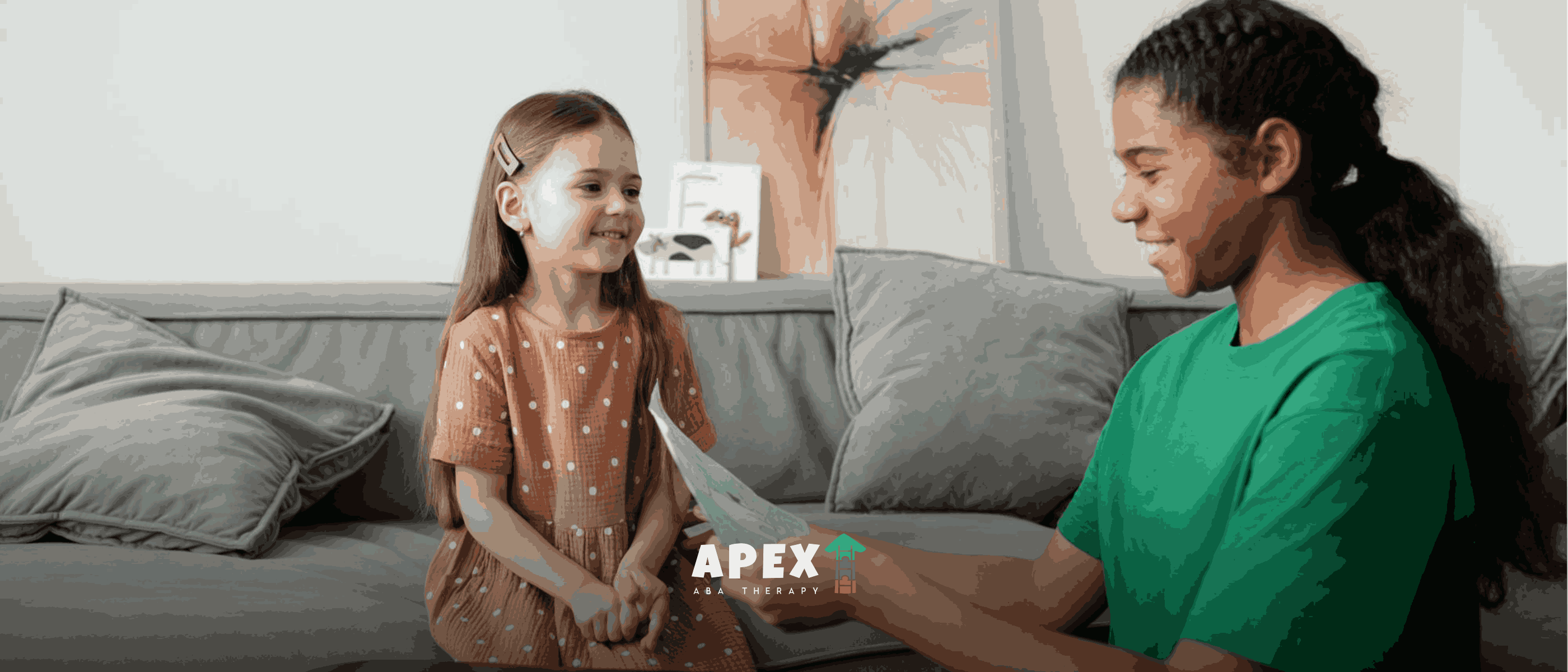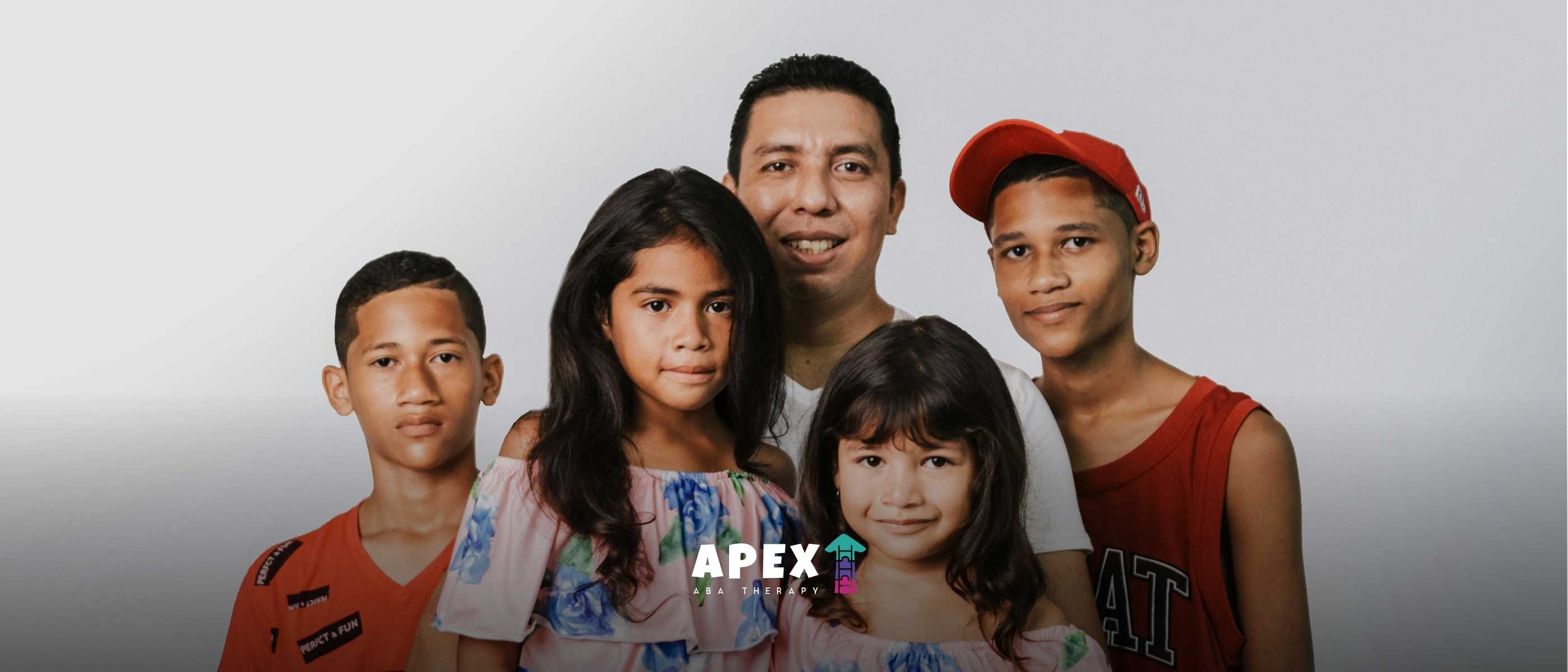Autism and Energy-Efficient Smart Lighting
Enhancing Living Spaces for Autism with Smart Lighting

Autism and Energy-Efficient Smart Lighting
Introduction
Individuals with Autism Spectrum Disorder (ASD) often face unique sensory challenges, with lighting playing a crucial role in their daily experiences. The integration of energy-efficient smart lighting presents a valuable opportunity to improve the comfort and quality of life for those with autism. This article delves into how technology adapts environments to meet the sensory needs of autistic individuals, ensuring both well-being and energy efficiency.
Understanding Light Sensitivity in Autism

What is light sensitivity in autism?
Light sensitivity, also referred to as photophobia, is a prevalent condition in individuals with autism spectrum disorder (ASD), affecting approximately 90-95% of this demographic. This sensitivity is often connected to visual processing challenges, particularly involving an abnormal pupillary light reflex. As a result, individuals may react adversely to bright light conditions.
Those experiencing light sensitivity may encounter discomfort from artificial lighting, leading to symptoms such as headaches and light-avoidance behaviors. Such responses can amplify feelings of anxiety and irritability. Bright or flickering lights, especially fluorescent ones, can prove particularly distressing, triggering sensory overload that affects daily functioning.
To effectively manage light sensitivity, several strategies can be implemented:
- Minimize Exposure: Reducing contact with harsh or bright lighting contexts.
- Use Tinted Glasses: These can help filter out intense light sources, providing relief.
- Opt for LED Lights: Choosing energy-efficient LED lighting can create a more soothing environment, thanks to its consistent brightness and warmth.
These strategies are crucial to enhancing comfort and overall well-being for individuals with autism, fostering healthier environments that promote emotional stability.
Preferred Lighting Types for Autism-Friendly Spaces

What types of lighting are best for individuals with autism?
Children with autism are particularly impacted by lighting conditions, which can significantly affect their mood and behavior. Soft, mellow colors like blue and green are proven to foster relaxation and creativity. These hues create a soothing atmosphere, in stark contrast to harsh or flickering lights, which can lead to distress and discomfort, possibly resulting in meltdowns.
Natural light is another crucial element for individuals with autism. Exposure to natural light aids in regulating circadian rhythms, promoting better sleep quality, and alleviating symptoms often associated with mood disorders such as seasonal affective disorder. The ability to simulate natural light through technologies like LED lighting systems further enhances emotional stability and comfort.
Adaptive lighting solutions, particularly dimmable LED lights, have demonstrated positive effects in educational environments, notably improving behavior and focus among autistic children. The implementation of such lighting options promotes a structured and predictable setting for daily activities.
Carefully selecting lighting—steering clear of fluorescent lights and ensuring the safety of therapeutic settings—is essential. These considerations are vital for supporting the emotional well-being and sensory needs of individuals with autism, ultimately contributing to a more conducive environment for learning and engagement.
Impact of different lighting types on mood and behavior
The lighting type directly influences mood and behavior in autism-friendly spaces. Energy-efficient smart lighting options provide customization in brightness and color, facilitating personalized environments that help minimize anxiety and sensory overload.
The significant correlation between lighting and behavioral outcomes emphasizes the need for thoughtful planning, ensuring that spaces cater to sensory sensitivities while promoting overall well-being.
The Advantages of LED Lighting for Autistic Individuals

Benefits of LED Lighting for Those with Autism
LED lighting provides several advantages that enhance the comfort and well-being of individuals with Autism Spectrum Disorder (ASD). Primarily, LED lights are flicker-free, which is critical for those sensitive to visual stimuli. Unlike fluorescent lights that can flicker and cause discomfort, LEDs offer consistent illumination that reduces sensory overload.
Furthermore, LEDs emit a range of natural colors and adjustable brightness levels, allowing for the creation of soothing environments. Soft hues like blue and green have a calming effect, promoting relaxation and emotional stability.
Comparisons with Fluorescent Lights
When comparing LED and fluorescent lighting, several differences stand out:
| Feature | LED Lighting | Fluorescent Lighting |
|---|---|---|
| Flicker | No discernible flicker | Often flickers, causing discomfort |
| Color Temperature | Adjustable, mimics natural light | Limited options |
| Noise | Silent | Can emit audible noise |
| Energy Efficiency | Up to 75% less energy use | Less energy efficient |
Accordingly, LED lights are not only beneficial but are also generally recommended for creating autism-friendly spaces. These advantages make LED lighting a superior choice for promoting sensory comfort in individuals with autism.
Sensory-Friendly Lighting Solutions

What are sensory-friendly lighting solutions for individuals with autism?
Sensory-friendly lighting solutions for individuals with autism play a crucial role in shaping comfortable living and learning environments. These solutions are designed to address the unique sensory processing needs often experienced by those on the autism spectrum, especially regarding light sensitivity.
Visual Stimulation Tools:
- Projectors: These can fill a room with gentle movements, patterns, shapes, and calming scenes. By immersing individuals in a softly lit environment, projectors help create a peaceful atmosphere conducive to relaxation and concentration.
- Sensory Lamps: These lamps can cycle through various soothing colors, helping to regulate mood and serve as gentle night lights. Their changing hues not only provide soft lighting but can also be engaging for play.
Benefits:
- Promote Relaxation: Using calming colors such as blue and green can enhance emotional stability and comfort.
- Support Learning: Appropriate lighting helps improve focus and engagement, which is essential for academic success.
- Cater to Individual Needs: Each individual with autism has specific preferences, and customizable lighting systems can be tailored to meet these diverse sensory requirements.
Lighting solutions tailored for sensory sensitivities offer significant advantages that enhance relaxation and contribute positively to the daily experiences of individuals on the autism spectrum.
Adaptive Lighting Technologies for Emotional and Sensory Well-being

How can adaptive lighting technologies enhance comfort and emotional stability for individuals with autism?
Adaptive lighting technologies are redefining the sensory environments for individuals with Autism Spectrum Disorder (ASD). With adjustable LED systems, users can customize brightness and color temperature to create their ideal atmosphere. This flexibility helps to cater to the unique sensory needs of individuals with autism, allowing them to modify the lighting according to their emotional states and activities.
Calming light options, such as soft blue or green hues, can significantly reduce anxiety, enabling relaxation. Tools like bubble tube lamps and fiber optic lights serve as interactive stimuli, promoting positive emotional responses and improving sensory integration. By creating a safe and comforting space through tailored lighting, individuals can engage more effectively in activities, whether in educational settings or therapeutic environments.
Moreover, adaptive lighting aids in emotional regulation. Dimmable lights can assist in creating a serene environment during stressful moments, while programmable settings can simulate natural light transitions throughout the day, helping to regulate circadian rhythms. The ability to control the lighting reduces sensory overload, allowing for a greater sense of security and well-being.
In summary, the thoughtful implementation of adaptive lighting has the power to enhance emotional stability and overall comfort for individuals with autism, transforming their environments into supportive and nurturing spaces.
Lighting's Role in Autism Sensory Experiences and Well-being
What is the relationship between lighting, sensory experiences, and well-being for individuals with autism?
The connection between lighting and sensory processing in autism is profound. Individuals with Autism Spectrum Disorder (ASD) frequently experience light sensitivity, which means they can be easily overwhelmed by bright or flickering lights. Such harsh lighting conditions can lead to sensory overload, triggering anxiety and discomfort. Conversely, well-designed lighting solutions can create calming environments that significantly improve well-being.
Soft, adjustable lighting options, particularly those that utilize LED technology, have shown promising results. They provide flicker-free illumination and come in soothing colors such as blue and green, enhancing relaxation and focus. For example, customizable features in smart lighting systems allow individuals to adjust brightness and color temperature according to their preferences, promoting emotional stability and reducing sensory distress.
Research highlights that incorporating dimmable lights and natural light simulation can help regulate mood and behavior, making daily activities more manageable for individuals with autism. Moreover, environments that maximize natural light can improve circadian rhythms and overall emotional health.
Lighting’s impact on emotional and sensory states
A thoughtfully designed lighting atmosphere can crucially influence emotional and sensory experiences. Bright and flickering lights often exacerbate discomfort and anxiety, while soft and stable illumination promotes a sense of calm and security. For individuals with autism, maintaining a predictable lighting environment can help mitigate sensory overload and support engagement in social and daily activities.
By investing in energy-efficient smart lighting, caregivers and families can create sensory-friendly environments that nurture well-being. These adaptations not only enhance comfort but also foster independence by empowering individuals to manage their own sensory needs effectively. Ultimately, the thoughtful integration of lighting can vastly improve the quality of life for those on the autism spectrum.
Financial and Environmental Benefits of Smart Lighting
What are the financial and environmental benefits of using smart lighting solutions in autism care?
Smart lighting solutions provide significant financial and environmental advantages for autism care. By utilizing energy-efficient technologies like LED lighting, families can reduce energy costs considerably. It is estimated that families can save between $600 to $1,200 annually on their utility bills, which allows for funds to be directed towards essential therapies and support services for individuals with autism.
In addition to the financial benefits, smart lighting systems also enhance the daily living experience for autistic individuals. These systems contribute to creating calming environments that alleviate anxiety and improve emotional well-being. The ability to customize brightness and color temperature supports the sensory needs of individuals with autism, fostering a better quality of life.
| Benefit Type | Financial Impact | Environmental Impact |
|---|---|---|
| Energy Savings | Save $600 to $1,200 annually | Reduces overall energy consumption |
| Resource Reallocation | Funds for therapies | Improves air quality |
| Enhanced Comfort | Provides a calming atmosphere | Supports environmental sustainability |
| Improved Living Conditions | Quality-of-life improvements | Reduces reliance on non-renewable sources |
Overall, the integration of smart lighting systems not only provides financial relief but also promotes a healthier environment for individuals with autism, making a compelling case for their implementation.
Educational Resources for Caregivers and Professionals
Are there educational resources for caregivers and professionals on effective lighting solutions for autism?
Yes, there are several educational resources available for caregivers and professionals focused on effective lighting solutions for autism. These resources stress the critical role of lighting, as individuals with autism often experience heightened sensitivities to various lighting conditions.
Several recommendations suggest utilizing LED lighting due to its calming effects, and they provide insights into specific sensory lights that can help reduce anxiety and improve focus. The practical guidance includes tips for designing sensory-friendly spaces that minimize sensory overload and foster emotional stability.
Moreover, the importance of energy-efficient solutions, such as smart lighting systems, is highlighted. These systems not only enhance comfort for individuals with autism but also offer cost-saving benefits, addressing both sensory needs and financial concerns associated with autism-supportive environments.
| Resource Type | Description | Benefits |
|---|---|---|
| Guidelines for Lighting | Focus on the impact of lighting on sensory experiences in autism. | Enhances emotional stability and comfort. |
| Smart Lighting Solutions | Information on customizable lighting systems for individual sensory needs. | Supports independence and reduces anxiety. |
| Practical Tips | Strategies for setting up sensory-friendly spaces to minimize overstimulation. | Promotes better focus and well-being. |
Practical Design Tips for Autism-Friendly Lighting
What practical design tips exist for creating autism-friendly environments using smart lighting?
Creating autism-friendly environments utilizing smart lighting requires thoughtful consideration of individual sensory needs and energy efficiency. Here are some effective strategies:
Use of LED Bulbs: Opt for LED lighting as they consume about 75% less energy than traditional incandescent bulbs, while providing consistent brightness and reducing flickering. This type of lighting caters well to those with sensory sensitivities.
Dimmable Features: Implement dimmable lighting options to allow families to adjust brightness according to their needs, minimizing glare and promoting relaxation. This flexibility can help reduce visual overstimulation that can occur with harsh lighting.
Programmable Settings: Incorporate lighting systems with programmable scheduling. These settings can simulate sunlit environments, adjusting brightness and color temperature throughout the day to create a more calming atmosphere.
Natural Light Maximization: Whenever possible, maximize the use of natural light and incorporate window treatments that allow for gentle light filtering. This promotes emotional stability and reduces glare.
Smart Technology Integration: Utilize motion sensors that can automatically adjust lighting based on room occupancy, enhancing energy efficiency while providing a comfortable atmosphere.
These strategies collectively ensure that smart lighting serves both the sensory and energy needs of individuals with autism, creating harmony within their environments.
Smart Lighting for Enhanced Comfort and Functionality
Role of smart lighting in autism care
Energy-efficient smart lighting systems are immensely beneficial in autism care, primarily due to their customizable features. Individuals with Autism Spectrum Disorder (ASD) often experience heightened sensory sensitivities, especially to light. Smart lighting allows them to adjust brightness and color temperature to suit their unique sensory preferences, thus creating a more comfortable and less overwhelming environment.
How lighting supports daily activities and routines
These lighting systems facilitate improved day-to-day function by providing a soothing backdrop for daily activities. For instance, softer hues—like blue and green—can promote relaxation, making it easier for individuals to focus and communicate effectively. Additionally, features such as dimmable options help in establishing calming evening routines that encourage better sleep by mimicking natural light patterns during transition times.
Moreover, predictable lighting changes can support the establishment of daily routines, which are crucial for individuals with autism.
| Feature | Benefits | Impact on Autism Care |
|---|---|---|
| Customizable Brightness | Reduces sensory overload | Promotes emotional regulation |
| Dimmable Options | Aids in preparing for sleep | Improves sleep quality |
| Color Temperature Control | Enhances mood and well-being | Increases comfort and focus |
| Scheduling Capabilities | Establishes consistent routines | Supports daily activities |
Smart lighting thus serves as an instrumental component in creating environments that support the well-being of individuals with autism, fostering independence and confidence in their daily lives.
Optimizing Environments with Renewable Energy Solutions
How can renewable energy solutions enhance autism care environments?
Incorporating renewable energy solutions in autism care environments contributes to both sustainability and improved sensory experiences. Solar power, for example, does not just lower utility bills; it allows significant reallocation of funds towards essential autism services. This financial benefit can enhance the quality of care provided to individuals on the spectrum.
The integration of renewable energy systems also improves indoor air quality. Reducing emissions from traditional energy sources is crucial for individuals sensitive to pollutants, contributing to a healthier living or learning space. Enhanced air quality can alleviate discomfort and help in maintaining focus for autistic individuals.
Moreover, renewable energy solutions promote stability in indoor climates. For individuals with heightened sensory sensitivities, predictable environments are essential for minimizing disruptions. By maintaining consistent temperatures and lighting, these sustainable practices help create a calming atmosphere that fosters emotional well-being among individuals with autism.
Benefits of solar power integration in autism care
Integrating solar power into autism care centers offers significant benefits:
- Cost Savings: Families in autism care environments can save between $600 to $1,200 annually by utilizing solar energy, making care more affordable.
- Energy Efficiency: Solar panels effectively reduce reliance on traditional sources, which is not only cost-effective but also beneficial for the environment and families seeking autism services.
- Improved Functionality: Facilities adopting renewable energy experience improved operational efficiency, allowing them to allocate resources more effectively for therapy and support programs.
By making such energy-efficient upgrades, environments can be optimized for sensory comfort and well-being, fundamentally improving the quality of life for individuals with Autism Spectrum Disorder (ASD).
| Benefits of Renewable Energy | Details |
|---|---|
| Cost Savings | Significant reduction in utility bills and reallocated funds for care |
| Enhanced Indoor Air Quality | Reduced emissions lead to better respiratory health |
| Stable Indoor Climate | Predictable environments minimize sensory disruptions |
Conclusion
The integration of energy-efficient smart lighting in autism care environments plays a fundamental role in enhancing the quality of life for individuals with ASD. By mitigating sensory sensitivities, promoting emotional stability, and facilitating personalized control over environmental factors, these technologies offer both immediate and long-term benefits. Whether through the comfort provided by LED lights or the financial savings from renewable energy solutions, smart lighting represents a pivotal advancement in creating supportive, autism-friendly spaces. As awareness and educational resources continue to proliferate, the impact of these lighting solutions will undoubtedly expand, bringing improved well-being and independence to individuals with autism worldwide.
References
- Autism and energy-efficient smart lighting - Cross River Therapy
- The Benefits of Energy-Efficient Autism Homes | Discovery ABA
- Autism Sensory-Friendly Energy-Efficient Lighting - Golden Steps ABA
- Shining a Light on Autism: Benefits of Energy-Efficient Smart Lighting
- Energy-Efficient Autism Community Resources
- How smart energy helps autism homes - Cross River Therapy
- Autism-Friendly Environments with Smart Energy Tech
Frequently Asked Questions

Can a Child Have Autism and Still Talk Normally?
Can a Child Have Autism and Still Talk Normally?

What Are the Red Flags for Autism in a 2-Year-Old?
Autism Red Flags in 2-Year-Old Children | Apex ABA

Is Autism a Lifelong Condition?
Is Autism a Lifelong Condition? Understanding The Journey

What is the Difference Between Autism and Sensory Processing Disorder?
Autism vs Sensory Processing Disorder Differences | Apex ABA

What's the Difference Between Autism and Speech Delay?
Autism vs Speech Delay & Key Differences Explained | Apex

ABA Therapy Enhancing Social Skills: A Key to Improved Communication and Interaction for Children with Autism
How ABA Therapy Helps Children Build Social Skills

Misconceptions About ABA Therapy: Clearing Up the Myths
Common Misconceptions About ABA Therapy |Apex ABA.

Best Age to Start ABA Therapy & What Parents Should Know
Best Age to Begin ABA Therapy for Children | Apex ABA

What’s the Difference Between High-Functioning Autism and Asperger’s?
Difference Between High-Functioning Autism and Asperger’s

ABA Therapy in North Carolina: A Complete Guide for Families
Learn everything about ABA therapy in North Carolina, including services, costs, insurance coverage, and how to choose the best ABA provider in North Carolina.

Life-Changing ABA Therapy Case Studies You Need to Know
Real Success Stories from ABA Therapy Journeys | Apex ABA

What Does It Mean to Be “On the Spectrum”?
What Does It Mean to Be on the Autism Spectrum? | Apex ABA

Is Autism a Mental Illness or a Developmental Disorder?
Mental Illness or Developmental Disorder Explained

Can Children “Outgrow” Autism?
Can Children Outgrow Autism? Understanding the Facts

Is Autism More Common in Boys Than Girls?
Autism in Boys vs Girls: What the Research Reveals

Understanding the Power of Functional Behavior Assessment ABA
Effective ABA Techniques for Behavioral Intervention

Discover How ABA Helps ADHD in Your Child’s Life
How ABA Therapy Helps Children with ADHD | Apex ABA

ABA Therapy vs Preschool: Making the Right Choice Explained
Learn the key differences between ABA therapy and preschool to help you choose the best option for supporting your child’s early learning and development.

Which Personality Type Is Most Likely to Be Autistic?
Which Personality Type Is Most Likely to Be Autistic? | Apex ABA

Why Consistency Matters: What Happens If ABA Therapy Ends Prematurely
What Happens If ABA Therapy Is Stopped Too Early? | Apex ABA

How Can You Gain an Autistic Person’s Attention? Tips for Meaningful Connection
How Can You Gain an Autistic Person’s Attention?

Sensory Sensitivity and Sixth Sense: What Autism Research Shows
Do Autistic People Have Sixth Sense? | Apex ABA

What Happens If Autism Is Left Untreated?
Can Autism Get Worse If Untreated? | Apex ABA

What Not To Do With An Autistic Child: Avoid These 10 Mistakes
What Not To Do With An Autistic Child? | Apex ABA

Coping with Regressive Autism: Tips for Parents
What is Regressive Autism? | Apex ABA

Do Autistic Kids Live with Parents Forever? Here’s the Reality
Do autistic kids live with parents forever? Discover the facts about independence and living arrangements in autism with expert-backed insights.

Red Flags in ABA Therapy: What Parents Must Watch For
What are the red flags in ABA therapy? Learn to identify warning signs for safe, effective autism treatment in this blog.

Can You Go from Level 3 Autism to Level 1? Is It Possible?
Can you go from level 3 autism to level 1? Learn about progress, therapy, and support options with expert help from Apex ABA.

Autism vs Introversion: How to Tell the Difference
Is it autism or just introversion? Learn the key differences and signs with expert insights from Apex ABA.

ABA for Managing Transitions: Tips to Ease Change for Kids
Learn how ABA for managing transitions helps children with autism handle change smoothly.

Understanding the 7 Dimensions of ABA for Better Outcomes
Discover the 7 Dimensions of ABA and how they can lead to better outcomes.

5 Unique Autistic Love Languages You Should Know About
Discover the 5 unique autistic love languages that can enhance your relationships.

Transforming Futures: Improving Lives of Kids with Autism
Discover how innovative strategies are focused on improving lives of kids with autism.

ABA Therapy Techniques for Addressing Repetitive Behaviors in Autism
Harnessing ABA Strategies to Tackle Repetitive Behaviors in Autism

The Role of ABA Therapy in Enhancing Communication Skills
Transforming Communication for Children with Autism Through ABA Therapy

How ABA Therapy Supports Effective Communication in Nonverbal Children
Unlocking Speech Through ABA: Transformative Paths for Nonverbal Children

How to Help Your Child Transfer Skills Learned in ABA Therapy to Real Life
Unlocking Real-World Success for Children in ABA Therapy

How ABA Therapy Helps Children Develop Better Organizational Skills
Empowering Children with ABA Therapy for Enhanced Organizational Skills

The Importance of Creating a Structured Routine in ABA Therapy
How Structured Routines Transform ABA Therapy for Autism

The Role of ABA Therapy in Developing Conflict Resolution Skills
How ABA Therapy Transforms Conflict Resolution Competence

The Importance of Generalization in ABA Therapy for Autism
Unraveling the Role of Generalization in Enhancing ABA Therapy Outcomes

Why ABA Therapy is Crucial for Parents of Children with Autism
The Transformative Impact of ABA Therapy on Families with Autistic Children

How to Involve Parents in the ABA Therapy Process
Maximize Parent Engagement in ABA Therapy for Better Outcomes

What are the Core Principles of ABA Therapy?
Exploring the Cornerstones of Applied Behavior Analysis

Why Communication is Key in ABA Therapy for Autism
The Crucial Role of Communication in ABA Therapy for Autism

Why ABA Therapy Works for Children with Autism Regardless of Severity
Effective ABA Interventions for All Levels of Autism

Why It’s Important to Maintain a Balanced Approach to ABA Therapy
Balancing Effectiveness and Ethics in ABA Therapy

The Role of ABA Therapy in Developing Adaptive Behavior Skills
Exploring How ABA Therapy Transforms Lives

The Benefits of Combining ABA Therapy with Speech Therapy
Maximizing Development with Integrated Therapy Approaches

What to Expect During an ABA Therapy Session
Demystifying ABA Therapy Sessions: A Comprehensive Overview

How ABA Therapy Enhances Cognitive Functioning in Children with Autism
Exploring the Influence of Applied Behavior Analysis on Autism Cognition

How ABA Therapy Helps Children with Autism with Transitions Between Activities
Easing Transitions for Children with Autism: The Role of ABA Therapy

How to Foster Cooperation Between Parents and Therapists in ABA Therapy
Building Effective Partnerships in ABA Therapy

The Role of Positive Reinforcement in ABA Therapy
Exploring the Impact of Positive Reinforcement in Modern ABA Therapy

Why ABA Therapy is Effective for Children of All Ages
Understanding the Reach and Impact of ABA Therapy Across Age Groups

How to Support Your Child’s Emotional Growth with ABA Therapy
Harnessing ABA Therapy for Enhancing Emotional Development in Children with Autism

The Role of ABA Therapy in Enhancing Peer Relationships for Children with Autism
Harnessing ABA Therapy to Boost Social Connections Among Autistic Children

How to Overcome Common Challenges in ABA Therapy
Navigating Hurdles in ABA Therapy: Strategies and Solutions

How to Manage Behavioral Expectations with ABA Therapy
Understanding Applied Behavior Analysis in Behavioral Management

How ABA Therapy Promotes Emotional Regulation in Children with Autism
Unlocking Emotional Balance: ABA Therapy's Role in Autism

How ABA Therapy Improves Social Skills in Children with Autism
Harnessing ABA Therapy to Enhance Social Competency in Autistic Children

The Role of ABA Therapy in Classroom Success for Children with Autism
Harnessing ABA for Academic and Social Growth in Autism

The Importance of Evaluating and Revising ABA Therapy Goals Regularly
Regular Evaluations: The Cornerstone of ABA Therapy Success

How to Choose the Right ABA Therapy Program for Your Child
Finding the Perfect ABA Therapy Fit for Your Child

The Role of Behavior Analysts in Implementing ABA Therapy
Understanding the Vital Contributions of Behavior Analysts in ABA Therapy

The Role of RBTs (Registered Behavior Technicians) in ABA Therapy
A Closer Look at the Essential Work of RBTs in ABA Therapy

What Makes ABA Therapy Effective for Different Learning Styles?
Unraveling the Flexibility and Effectiveness of ABA Therapy

Understanding the Importance of Data Collection in ABA Therapy
The Role of Data in Shaping Effective ABA Therapy

How ABA Therapy Helps with Toilet Training in Children with Autism
Unlocking Independence: ABA's Role in Autism Toilet Training

The Importance of Encouraging Natural Play in ABA Therapy
Revolutionizing ABA Therapy with Natural Play

How to Make the Most of ABA Therapy at Home
Enhancing ABA Therapy Practices Within Your Home

How to Make ABA Therapy Fun and Engaging for Children with Autism
Transforming ABA Therapy into a Fun Learning Journey

The Role of ABA Therapy in Addressing Verbal and Nonverbal Communication in Autism
Enhancing Communication Skills in Autism Through ABA Therapy

Understanding the Role of Family in ABA Therapy for Autism
The Crucial Impact of Family Engagement in Autism Therapy

How to Handle Setbacks and Challenges in ABA Therapy
Navigating Difficulties and Setbacks in ABA Therapy for Children

How ABA Therapy Can Help Children Build Stronger Relationships with Peers
Unpacking the Influence of ABA Therapy on Peer Relationships in Children

Understanding the Concept of Shaping in ABA Therapy
Demystifying Shaping Techniques in Applied Behavior Analysis

How ABA Therapy Enhances Independent Living Skills in Autism
Unlocking Independence: The Role of ABA Therapy in Autism
.jpg)
90+ Reading Statistics, Facts and Demographics
In this article, we will dive into 60 reading statistics that shed light on the importance of reading and its impact on different aspects of life.

How ABA Therapy Can Help Children with Autism Make Better Choices
Unlocking Autistic Children's Potential with ABA Therapy

How ABA Therapy Helps Children with Autism Adapt to New Environments
The Adaptive Benefits of ABA Therapy for Autism

What Does the Research Say About the Effectiveness of ABA Therapy?
Exploring the Role and Research Behind ABA Therapy

How to Create an Effective ABA Therapy Plan for Your Child
Guiding Parents Through Effective ABA Therapy Planning

The Long-Term Benefits of Consistent ABA Therapy for Children with Autism
Unlocking Potential: Consistent ABA Therapy for Autism

Why ABA Therapy Should Be Tailored to Each Child’s Unique Needs
The Necessity of Customizing ABA Therapy for Unique Child Development

What are the Different Types of ABA Therapy?
Exploring the Varieties of ABA Therapy for Autism and Beyond

How ABA Therapy Can Improve Functional Skills in Children with Autism
Unlocking the Potential: ABA Therapy for Autistic Children

How ABA Therapy Facilitates Peer Interaction for Children with Autism
Understanding the Impact of ABA Therapy on Autism and Peer Relationships

The Importance of Early Intervention in Autism Therapy
Unlocking Potential: The Crucial Role of Early Intervention in Autism

The Role of ABA Therapy in Creating Healthy Habits for Children with Autism
Understanding How ABA Therapy Shapes Daily Life for Autistic Children

How to Create a Supportive Environment for Children Undergoing ABA Therapy
Crafting a Nurturing Space for Effective ABA Therapy

The Benefits of Incorporating Technology into ABA Therapy
Harnessing Technology for Enhanced ABA Therapy Outcomes

How ABA Therapy Helps with Stereotypic Behavior in Autism
ABA Therapy: Transforming Stereotypic Behaviors into Meaningful Interactions in Autism

What to Expect in an ABA Therapy Program for Children with Autism
Understanding ABA Therapy for Kids with Autism

How to Create a Positive Home Environment for Children Under ABA Therapy
Cultivating a Therapeutic Space for ABA Success

How ABA Therapy Can Improve Safety Awareness in Children with Autism
Empowering Safety through ABA Therapy for Kids with Autism

The Link Between ABA Therapy and Improved Academic Performance in Children with Autism
Exploring the Profound Impact of ABA on Autism-Related Educational Success

The Benefits of Early ABA Intervention for Toddlers with Autism
Unveiling the Power of ABA for Toddlers with Autism

How ABA Therapy Promotes Independence and Life Skills Development
Unlocking Independence: The Role of ABA Therapy in Life Skills Development

How to Deal with the Emotional Impact of ABA Therapy on Parents
Navigating Emotions: Support Tips for Parents in ABA Therapy



